Belgium is a country that wears its history well, and nowhere is that more evident than in its châteaux and castle culture. The country is home to some of Europe’s most enchanting architectural feats, each estate steeped in centuries of power struggles, artistic ambition, and, maybe a bit of showing off. Whether you’re tracing the legacy of medieval fortresses or marveling at the symmetry of Baroque gardens, Belgium’s castles pack a cultural punch that rivals its beer.
From the fortified hulks of medieval strongholds to the polished grandeur of Baroque châteaux, Belgian castles are a masterclass in how to build with both style and swagger. Take Château de Modave, where 17th-century aristocrats flexed their engineering muscles with waterworks that outshone Versailles. Or Gravensteen in Ghent, a medieval fortress so tough it shrugged off centuries of war, courtroom dramas, and even a brief career in textiles.
Each castle tells a story about Belgium’s past in a patchwork of conquests and alliances. The country’s shifting borders and rulers turned its aristocracy into a colorful mosaic of Spanish grandees, Austrian courtiers, and homegrown schemers. The castles they left behind are character studies in stone, offering a glimpse into the audacious minds that dared to dream bigger, higher, and often with a moat.
15. Château de Modave
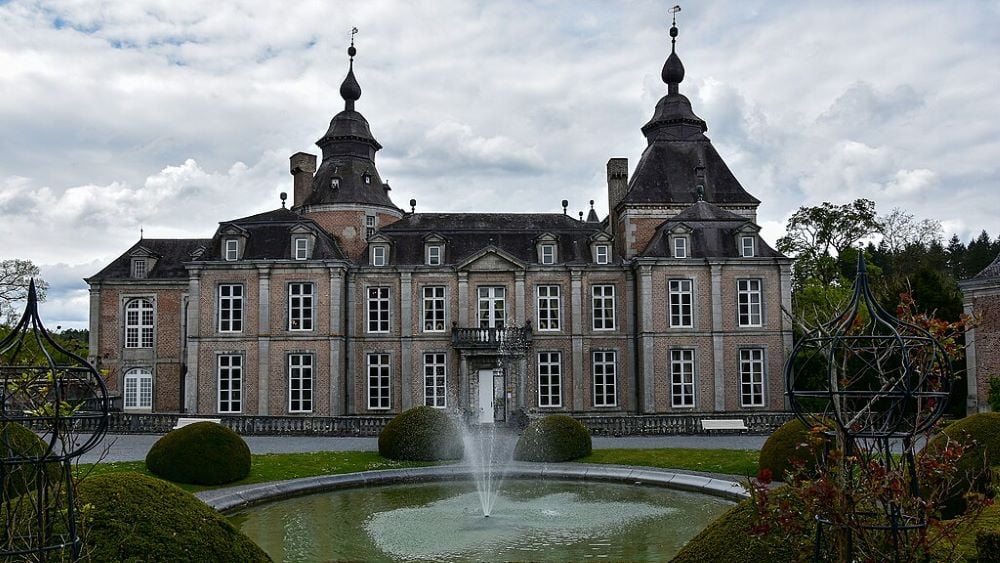
Château de Modave clings to its rocky perch above the Hoyoux Valley like it was daring medieval invaders to try their luck. Built in the 13th century as a donjon, it started as a no-nonsense stronghold for the Lords of Modave, who prioritized staying alive over aesthetic appeal. By the 17th century, however, military grit gave way to Baroque ambition when Jean-Gaspard-Ferdinand de Marchin decided that his fortress could use a little flair and maybe some stucco ceilings.
The result is a symmetrical masterpiece that looks like François Mansart himself had a hand in it, though no one’s quite sure if he did. The Château’s mansard roofs and triangular pediment scream High Baroque country house, while the corps de logis main block and its wings create a spatial drama that wouldn’t look out of place in Paris. Think Château de Maisons-Laffitte but with fewer royal neighbors.
Inside, Jan-Christian Hansche’s stucco ceilings from the late 1600s are practically Baroque TED Talks in plaster so intricate you’d swear they were carved by over-caffeinated cherubs. Modave is a stone-and-stucco lesson in how Belgian aristocrats turned defensive architecture into high art without losing the plot or the water supply.
14. Château d’Annevoie
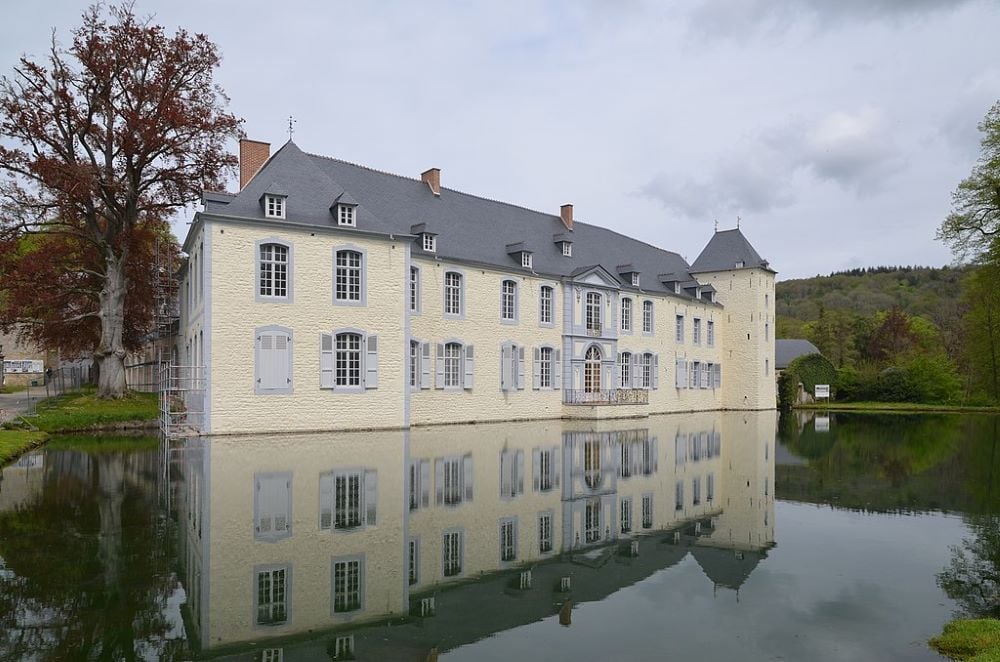
Château d’Annevoie is an 18th-century gem set in the village of Annevoie-Rouillon, surrounded by gardens that practically redefine landscape architecture. Built by the Montpellier family, it blends classical design with the rugged charm of the Condroz region, thanks to its sturdy gray stone construction. The château’s right wing, originally a manor house from 1627, anchors the estate in its historical roots, while later 18th-century expansions bring a refined symmetry that elevates its architectural presence.
The gardens, however, are the real showstopper. Designed between 1758 and 1776 by Charles-Alexis de Montpellier, they integrate French precision, Italian elegance, and English naturalism into a seamless landscape. Think of it as a diplomatic summit in horticulture: symmetrical canals and meticulously trimmed alleys meet meandering streams and Roman-inspired statuary. Over 50 gravity-powered fountains and cascades punctuate the grounds, their ingenious design rivaling even Versailles.
The estate is an exercise in balance — between the wild and the controlled, the practical and the aesthetic. The château’s sober architecture complements the playful ambition of the gardens, creating a dialogue between stone and water.
13. Zellaer Castle
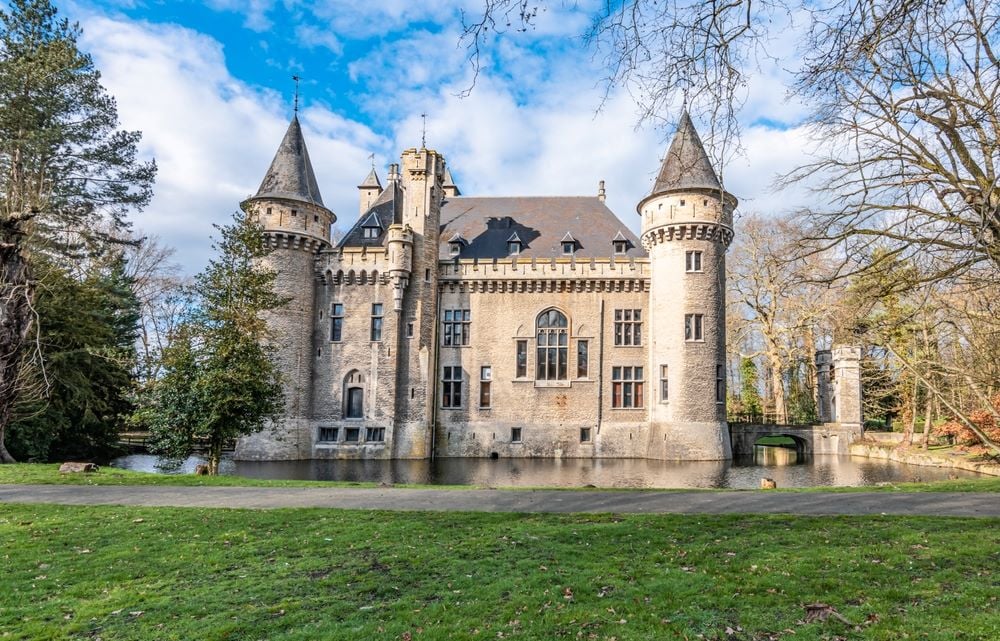
Kasteel van Zellaer in Bonheiden stands as a Neo-Gothic nod to medieval grandeur, constructed between 1888 and 1892 under Baron Gustavius de Vrière’s watchful eye. Architect Heugenbaarts of Mechelen designed this moated marvel, drawing inspiration, allegedly, from Loire Valley castles like Sully-sur-Loire. While evidence of a direct connection remains elusive, the parallels in design are striking, with its steep roofs, pointed arches, and turreted silhouette embodying the romanticized Gothic revival of the 19th century.
The castle’s materials carry their own story. Its white sandstone came from the dismantled forts of Vilvoorde, transported laboriously by local farmers with horse and cart — a task more medieval than the architecture itself. This blend of reclaimed stone and Neo-Gothic ambition creates a structure that feels both rooted in history and modern for its time.
The site’s history stretches back far beyond de Vrière’s era. Beneath the current castle lie the remnants of a much older foundation, possibly dating to the 13th century. Early descriptions speak of a fortified quadrangle flanked by four towers, suggesting medieval origins. The surrounding park, laced with moats and broad waterways, completes the setting, grounding the castle in a landscape where history and imagination intertwine. Since 2017, the Kempens Landschap Foundation has preserved this architectural and historical treasure.
12. Borrekens Castle

Borrekens Castle is a medieval fortress turned stately home, complete with a moat that would stop even the most determined door-to-door salesman. Its turrets and thick stone walls go back to a time when “home security” involved archers and boiling oil.
Also known as Kasteel de Borrekens or Vorselaar Castle, it has stood in the municipality of Vorselaar since the late 13th century. Originally built by the Van Rotselaar family, the medieval stronghold is defined by its classic defensive features — a broad moat, fortified towers, and an imposing gateway designed to keep intruders guessing. It’s a masterclass in feudal deterrence.
The castle’s story took a turn in the 19th century when it passed to Baron Edouard Adrien de Borrekens through his marriage to Marie-Eulalie van de Werve. The De Borrekens family, an old noble lineage with ties to Antwerp and Brussels, brought refinement to the fortress. Under Edouard’s stewardship, a French garden was designed by John Juchem, adding symmetry and elegance to the courtyard without compromising the castle’s medieval grit.
11. Château de Loppem
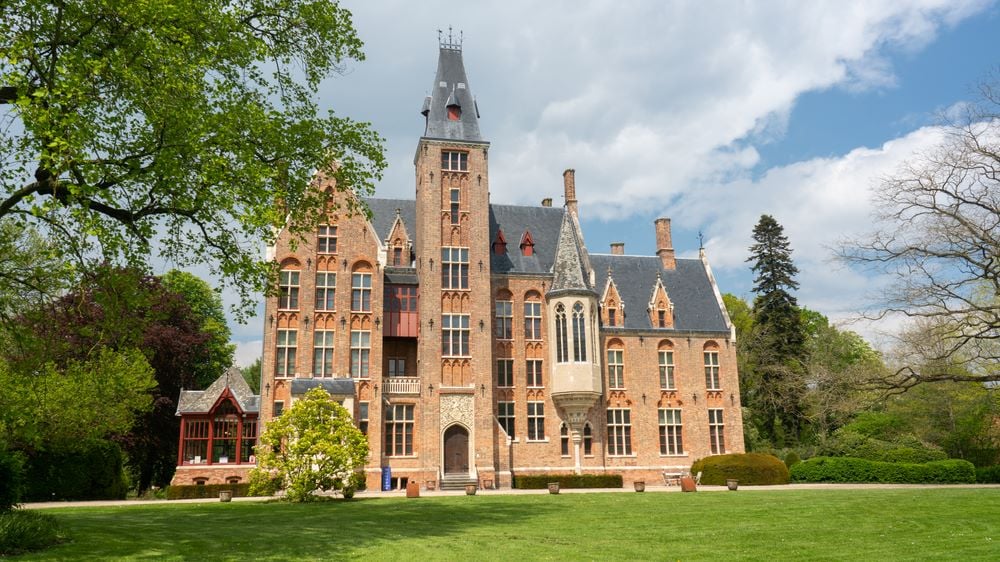
Loppem Castle stands near Bruges like a Gothic Revival manifesto carved in stone. Built between 1859 and 1862 for Baron Charles van Caloen, the structure is the combined vision of architects E.W. Pugin and Jean-Baptiste Bethune. Unlike many mansions of its era that have been “improved” into incoherence, Loppem retains its original architecture and interior — a rare feat in the land of overzealous renovations. Every room, from the richly furnished salons to the intricately adorned chapel, feels like a time capsule of 19th-century aristocratic taste.
The grounds extend the castle’s romantic narrative with ponds, a heritage-protected park, and a maze designed to charm and frustrate in equal measure. The estate captures the idealized medieval aesthetic so prized by the Gothic Revival, yet with a distinctly Belgian touch that balances grandeur with accessibility.
10. Château de Belœil

The Château de Belœil, nestled in the province of Hainaut, has been the seat of the princely Ligne family since 1394. Originally a medieval stronghold complete with a rectangular moat and four round towers, it has morphed over centuries into a French-inspired château.
Disaster struck during New Year’s festivities in 1900 when a fire gutted the château. Remarkably, the Ligne family salvaged much of their 20,000-volume library and art collection. French architect Ernest Sanson oversaw its reconstruction, preserving the château’s grandeur while updating it for the new century. The interiors were restored using treasures from the Ligne.
The surrounding gardens, designed in 1664, stick to the aesthetic roots of Baroque formality. Straight alleys, symmetrical ponds, and bosquets frame the château like a natural extension of the landscaping. Despite trends favoring English landscape gardens, the Ligne family maintained these classical elements, adding a small romantic folly nearby. Belœil stands as a rare fusion of medieval origins, Baroque precision, and aristocratic resilience.
9. Gravensteen Castle
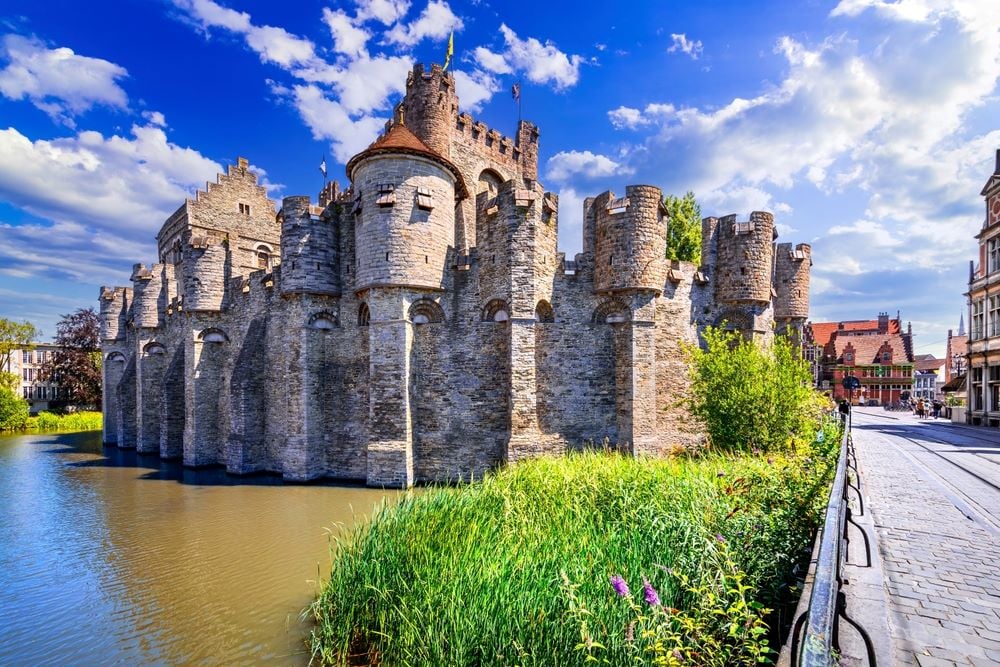
The Gravensteen, a brooding medieval fortress in the heart of Ghent, displays the kind of raw power that only 12th-century stone and a well-placed moat can deliver. Built in 1180 by Philip of Alsace, the castle’s thick walls, central donjon, and 24 small turrets formed an oval-shaped fortress that screamed authority.
Initially a residence for the Counts of Flanders, the Gravensteen doubled as a symbol of feudal dominance. Its moat, fed by the Lys River was a practical obstacle for anyone with ill-advised revolutionary tendencies. By 1353, however, the counts had packed up for more comfortable digs, leaving the Gravensteen to an eclectic second act. Over the centuries, it has served as a court, prison, mint, and a cotton factory during the Industrial Revolution.
By the late 19th century, the Gravensteen was in such a sorry state that it faced potential demolition. Enter architect Joseph De Waele, who, inspired by Viollet-le-Duc’s romanticized restorations, gave the castle a dramatic, if not always historically accurate, facelift. Restored and reimagined, it starred in the 1913 Ghent World Fair and remains a landmark of Gothic defiance.
8. Alden Biesen Castle
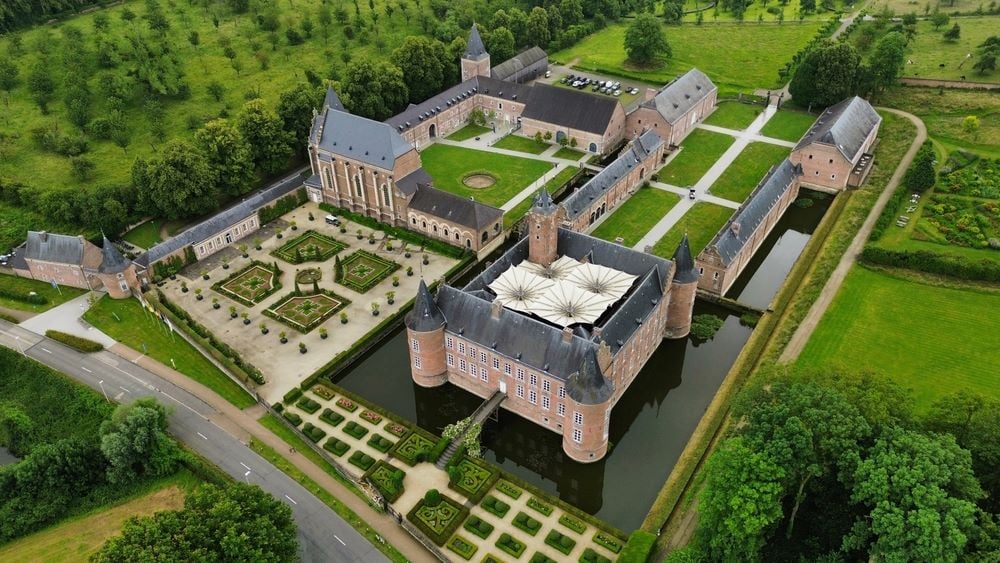
Alden Biesen is a sprawling, moated castle complex in the village of Rijkhoven, a place that feels as if it has more history per square meter than it knows what to do with. Founded in 1190 by the Teutonic Order — those crusading knights with a flair for mixing charity and swordplay — the site began as a pilgrimage chapel and hospital. By the 13th century, it had grown into a land commandery, anchoring the Order’s influence in the Meuse-Rhine area.
The castle’s current grandeur owes much to the 16th and 17th centuries, when the Teutonic administrators embraced their inner Renaissance princes. They turned the site into a statement of power and taste, building a grand residence in the Maasland Renaissance style. Highlights include a bell tower, Baroque church, columned gallery, and even a riding school. The gardens feature winding paths, monumental trees, and follies.
7. Château de Gaasbeek

Built around 1240 to defend the Duchy of Brabant against the County of Flanders, Gaasbeek Castle started as a medieval fortress with all the trappings: thick walls, a strategic position, and a stern sense of purpose. That purpose faltered in 1388 when the Lord of Gaasbeek, Sweder of Abcoude, allegedly orchestrated the murder of Everard t’Serclaes, sparking the wrath of Brussels’ city troops, who razed the castle in revenge.
By the 16th century, the House of Hornes resurrected the ruins as a brick castle, more suitable for aristocratic living. Lamoral, Count of Egmont, later added Gaasbeek to his holdings but met an untimely end at the hands of Philip II of Spain, leaving his legacy and the castle steeped in drama. Further centuries brought renovations and new owners, including René de Renesse and, finally, the Marquise Arconati-Visconti. Between 1887 and 1898, she transformed the castle into a Neo-Gothic fantasy, courtesy of architect Charles Albert, giving a romanticized nod to its medieval origins.
6. Château de La Hulpe
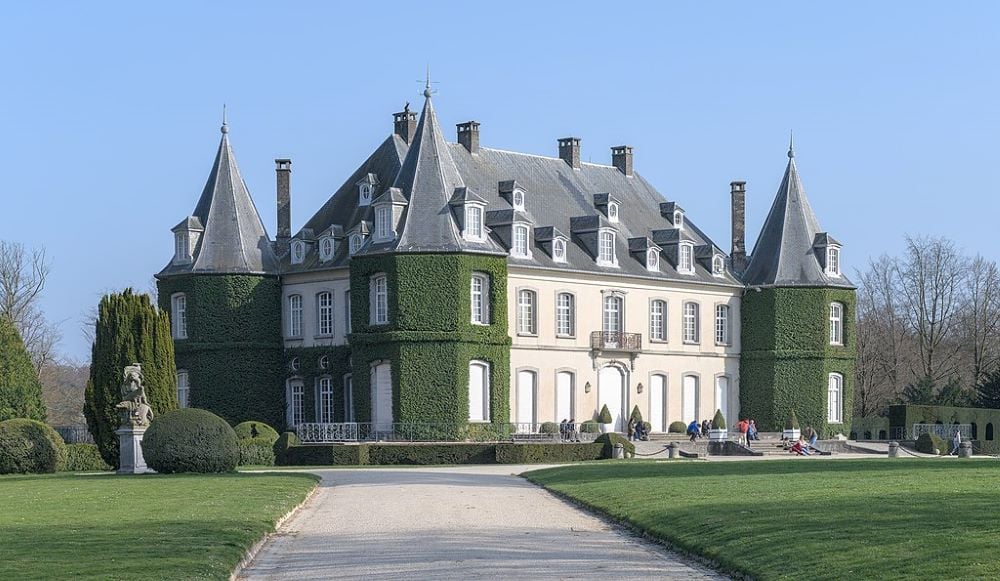
Château de La Hulpe, or Solvay Castle, rises gracefully on a hill in Walloon Brabant, blending aristocratic charm with industrialist ambition. Originally built in the 1840s for the Marquis Maximilien de Béthune, it was a Flemish Neo-Renaissance manor with a commanding view of a lake and over 220 hectares of manicured parkland. By 1893, the estate caught the eye of Ernest Solvay, the chemical magnate, who renovated the château.
Solvay gave the building a sleeker, more refined style and reimagined the grounds. He added a French formal garden to the castle’s immediate surroundings. Beyond this, he designed the estate with a softer English aesthetic — sweeping lawns, groves of rhododendrons and azaleas, and towering redwoods. A sprawling lake and carefully plotted pathways provided picturesque views of the landscape.
In 1968, the Solvay family donated the estate to Wallonia, stipulating it be used for education. The park now hosts the Fondation Folon, dedicated to the Belgian artist Jean-Michel Folon, and serves as a venue for equestrian therapy and cultural events. =
5. Château de Freÿr
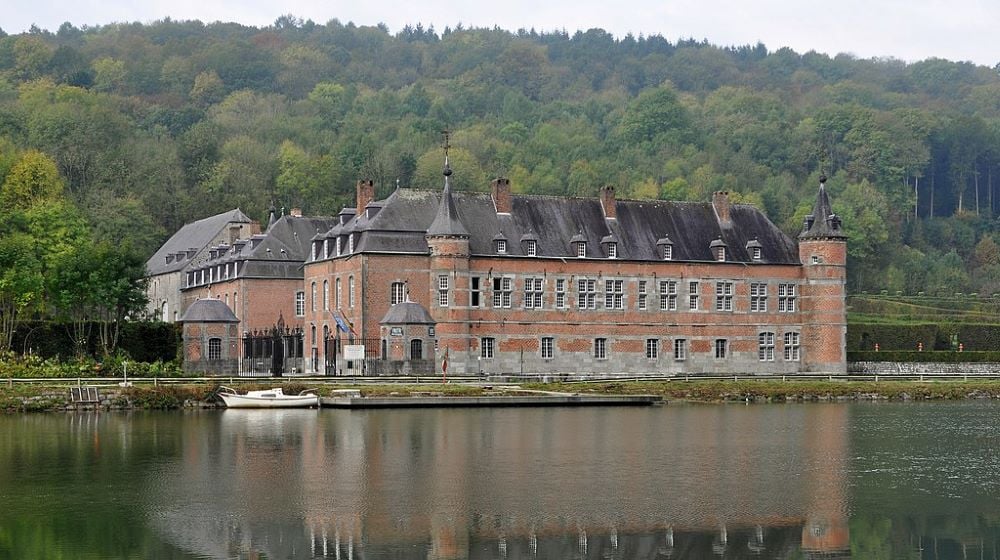
The Castle of Freÿr, perched on the left bank of the Meuse in Wallonia, blends Renaissance architecture and Baroque flair into a compact yet opulent estate. Originally a medieval keep granted in 1378, the castle transformed over centuries into a nobleman’s summer residence, echoing the tastes and politics of its various owners, the Beaufort-Spontin family.
The east wing, dating to 1571, exemplifies Renaissance Mosane architecture with its clean lines and understated sophistication. By the 17th century, additional wings created a closed square, though the south wing was later replaced with a wrought iron gate in the 1760s. Inside, Freÿr boasts 18th-century treasures: frescoed ceilings, Regency paneling, and a chapel adorned with a Baroque altar. Historical notes include Louis XIV’s stay and treaties signed within its walls, including the Coffee Treaty of 1675, marking Belgium’s introduction to the caffeinated brew.
The gardens, designed in 1760, unfold in André Le Nôtre’s signature style, with terraced layouts overlooking the Meuse. A maze of hedges, serene fountains, and Europe’s oldest potted orange trees — dating 350 years — add layers of charm. The Rococo pavilion crowns the estate, offering sweeping views of cliffs rising across the river.
4. Vêves Castle
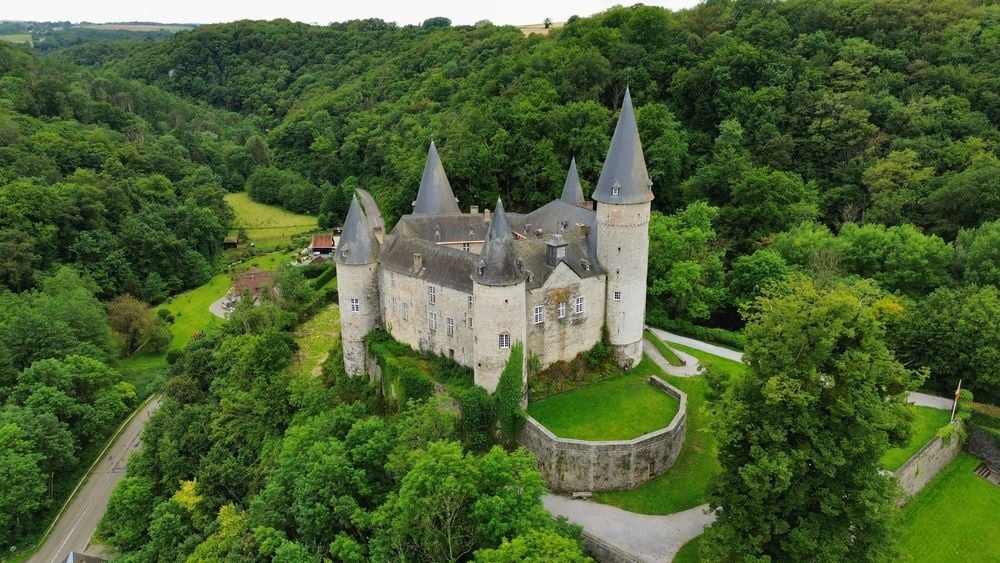
Classified as Major Heritage of Wallonia, the Castle of Vêves owes its origins to the 7th century, when Pippin of Herstal set up a fortification here. By the 13th century, the Beaufort family had claimed the site, constructing a stronghold that formed the nucleus of the current structure.
The castle’s present form, an irregular pentagon flanked by six towers of varying sizes, dates to around 1410. Its architecture adapts to the contours of the rocky base. Over time, restorations added new elements without erasing its Medieval backbone. A distinctive two-level half-timbered gallery connects the inner courtyard, a Louis XV-era red brick façade brightens one wall, and a cupola with a clock crowns the northern frontage.
Inside, the castle leans into its Renaissance makeover, with wood-paneled rooms, elegant alcoves, and 18th-century furnishings sourced from Countess Athénaïs de Mortemart’s estate. Vêves is a strategic blend of defense and domesticity, where Medieval grit meets aristocratic refinement on a rocky platform above the Belgian countryside.
3. Château d’Hargimont
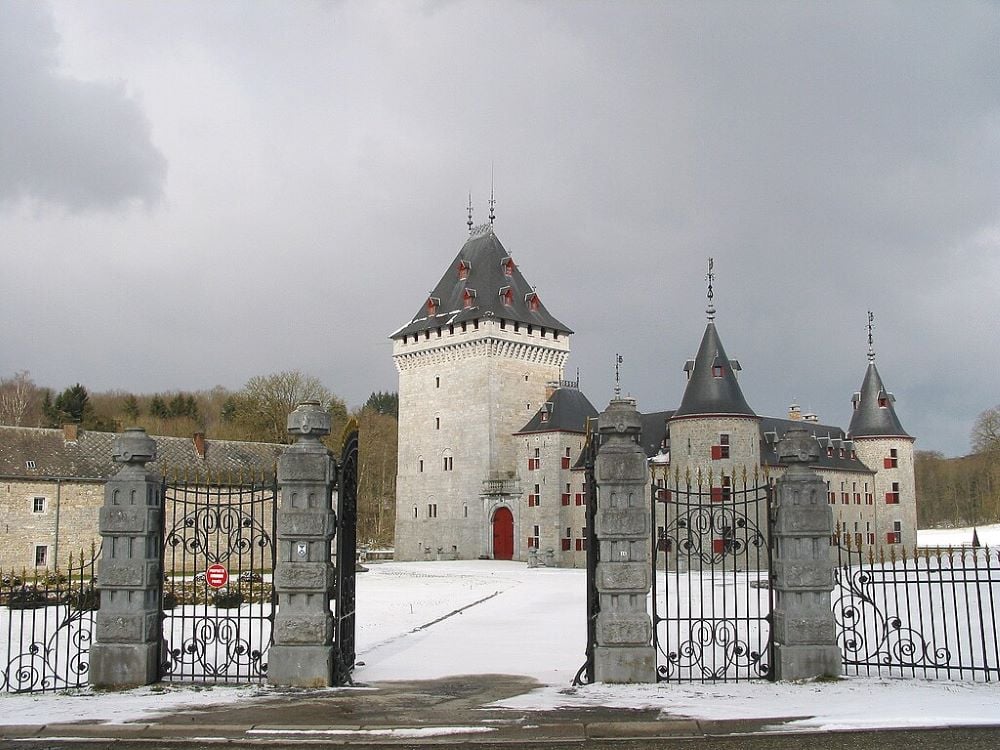
Château d’Hargimont, or Jemeppe Castle, is a medieval fortress reimagined over centuries into an imposing estate surrounded by marshland and the Hedrée River. Located in Hargimont, now part of Marche-en-Famenne, this castle stands as a layered narrative of architectural evolution and territorial power plays. Its origins trace back to Roman times when a fortified villa marked the site, but its medieval transformation truly shaped its character.
In the early 13th century, Jean d’Ochain replaced an earlier manor with a fortified donjon, a five-story tower surrounded by moats. Designed for both defense and practicality, the lower levels served as living quarters while the upper floors provided refuge for locals and storage. The d’Ochain family held the castle until 1616, when Catherine de Jemeppe’s marriage to Raes d’Ans brought expansions, adding residential wings and a double moat to enhance both utility and grandeur.
By the 18th century, the wings were modernized with additional windows, and 19th-century renovations under Adrien de Sauvage-Vercour added steep pitched roofs and crowning apexes to the donjon, lending a fairytale silhouette to its martial roots. Weathervanes, bearing the de Sauvage-Vercour monogram, now punctuate the roofs. Jemeppe Castle, with its storied past and evolving design, remains a vivid reminder of medieval ingenuity repurposed for elegance.
2. Royal Palace of Brussels
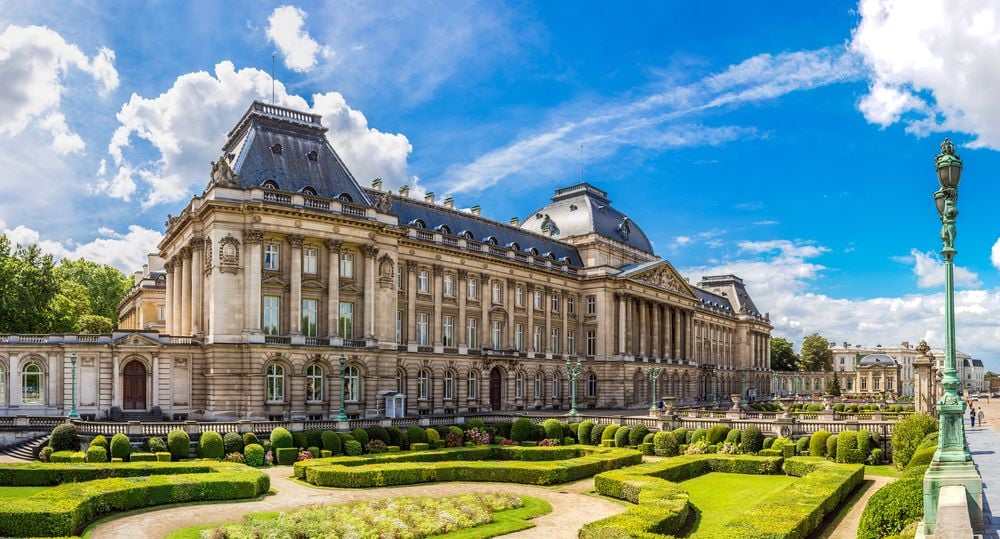
The Royal Palace of Brussels dominates its square with an unapologetic grandeur that reflects both its royal function and the ambitions of its builders. Though it no longer houses Belgium’s royal family — who reside at the more suburban Palace of Laeken — the palace serves as the King’s administrative headquarters and a symbol of the Belgian monarchy’s role in state affairs.
The structure’s origins trace back to the medieval Palace of Coudenberg, which stood nearby until it burned down in 1731. By the late 18th century, the current palace began to take shape, evolving into a Neo-Classical centerpiece under the direction of successive monarchs. Leopold II, who deemed the original structure too modest, spearheaded a significant expansion in the late 19th century, nearly doubling its size and adding the symmetrical façade with its gilded details and monumental pediment.
Inside, the palace is a showcase of opulent state rooms, from the Hall of Mirrors, where Congo-sourced copper gleams under an astonishing ceiling of beetle elytra, to the Throne Room, which, ironically, contains no throne. The Empire Room preserves echoes of Napoleonic influence, while the Grand Gallery and Marble Room host diplomatic events and royal ceremonies.
1. Bossenstein Castle
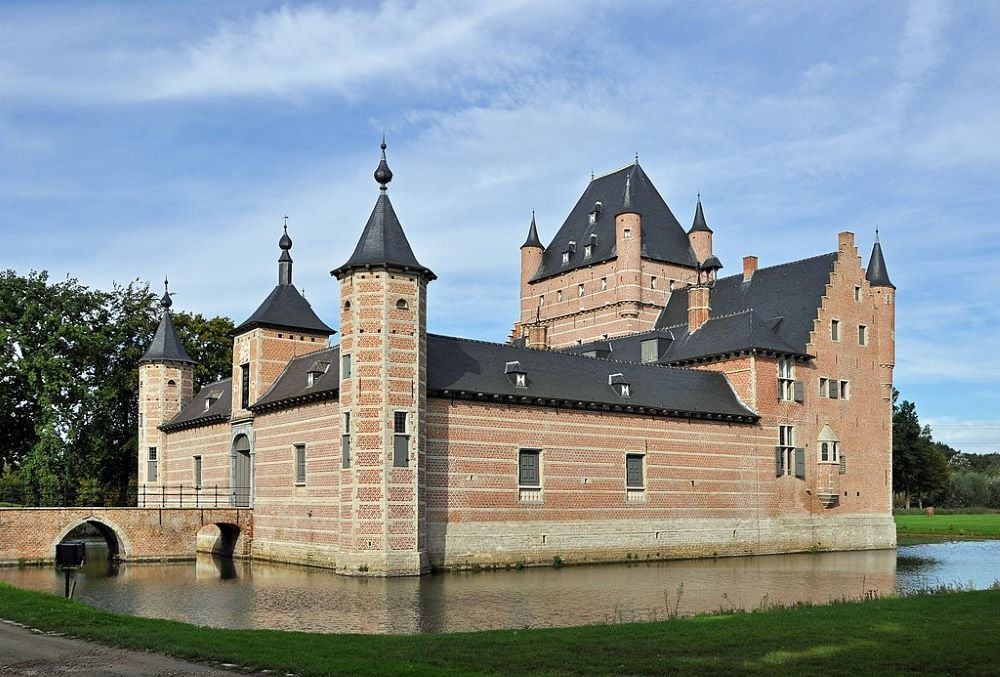
Bossenstein Castle, tucked into the village of Broechem in the Flemish Region, began as a medieval keep in the 14th century. First recorded in 1346 under the ownership of Joannes van den Bossche, whose name it carries, the castle started life as a no-nonsense stronghold. Its thick walls and strategic design were built to last.
Ownership shifted to the Van Berchem family, who, in 1655, expanded the castle beyond its original defensive core. These additions softened its martial edge, transforming it into a more refined residence while retaining its historic character. By 1906, Bossenstein underwent extensive restoration, blending its medieval roots with more modern sensibilities, ensuring its survival as both a historical and architectural landmark.






